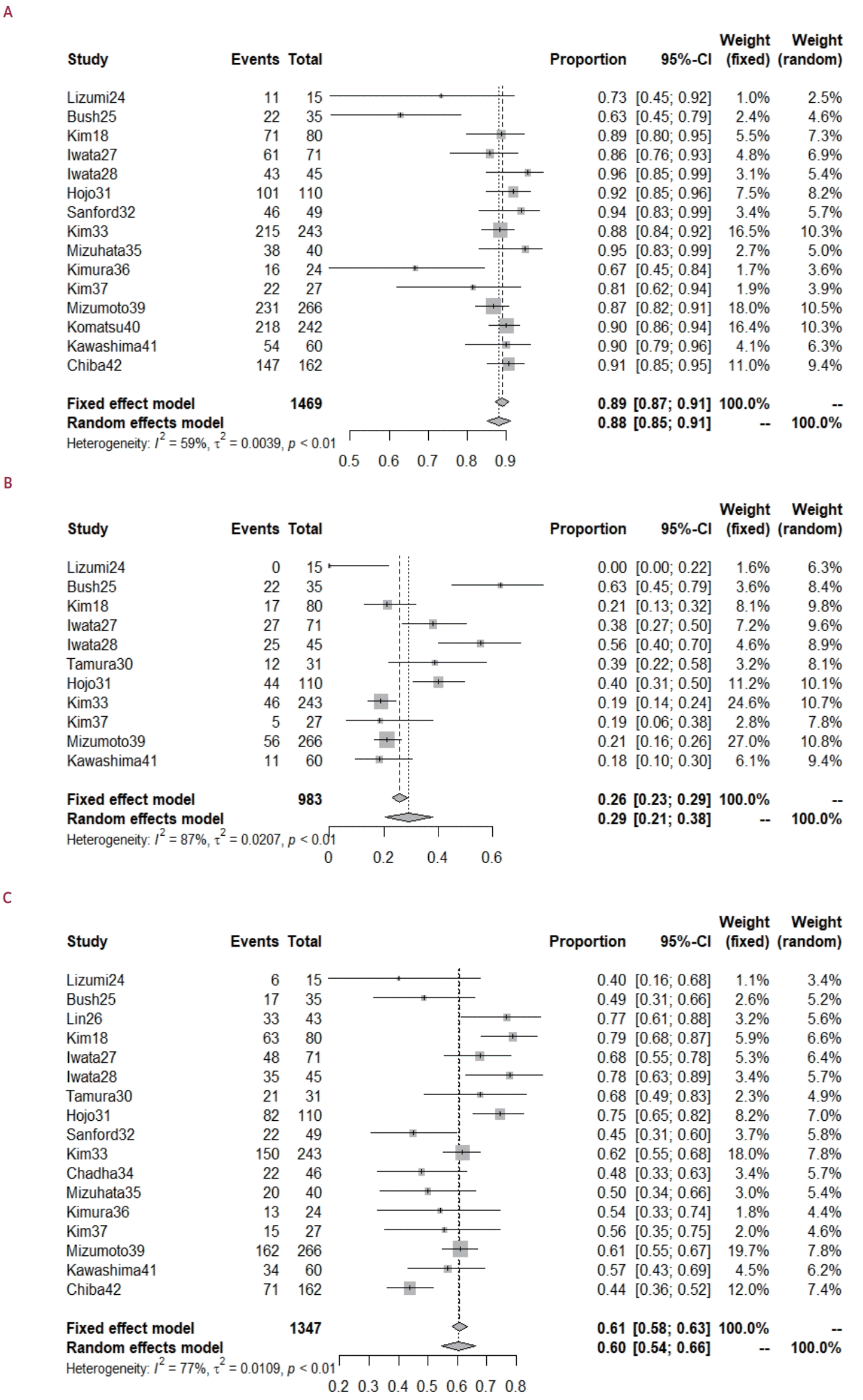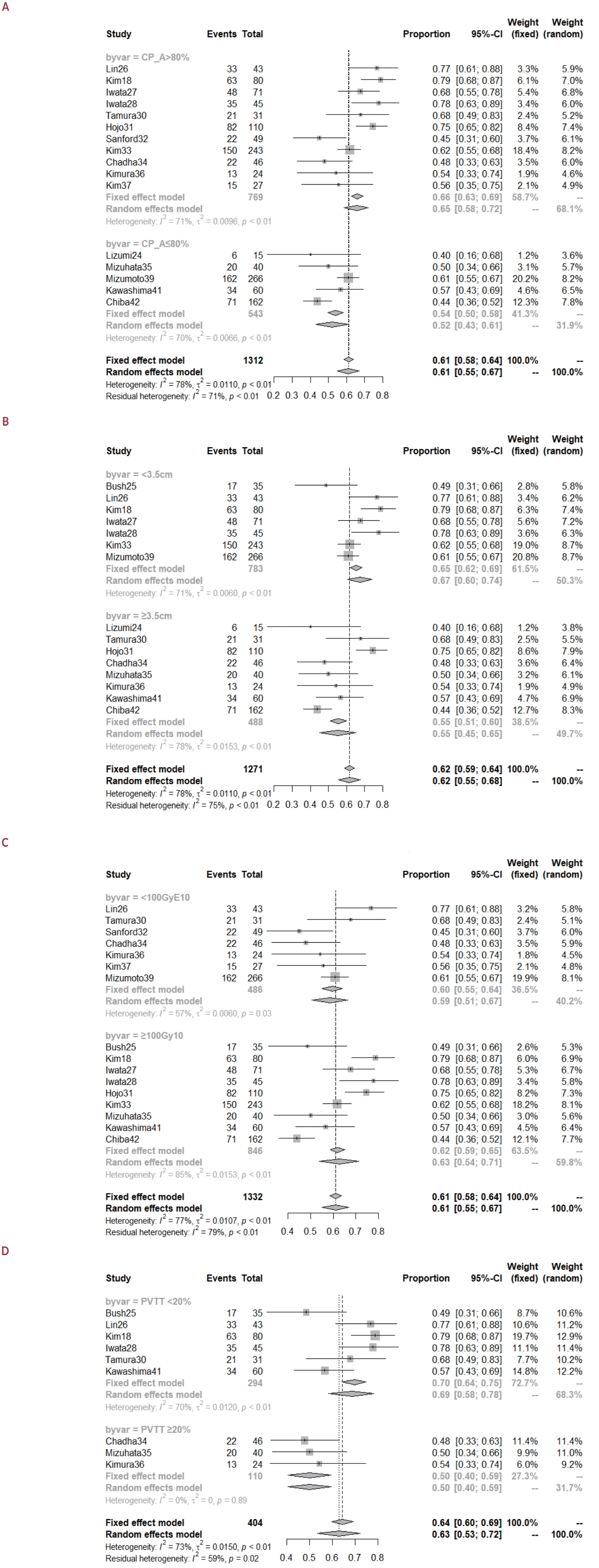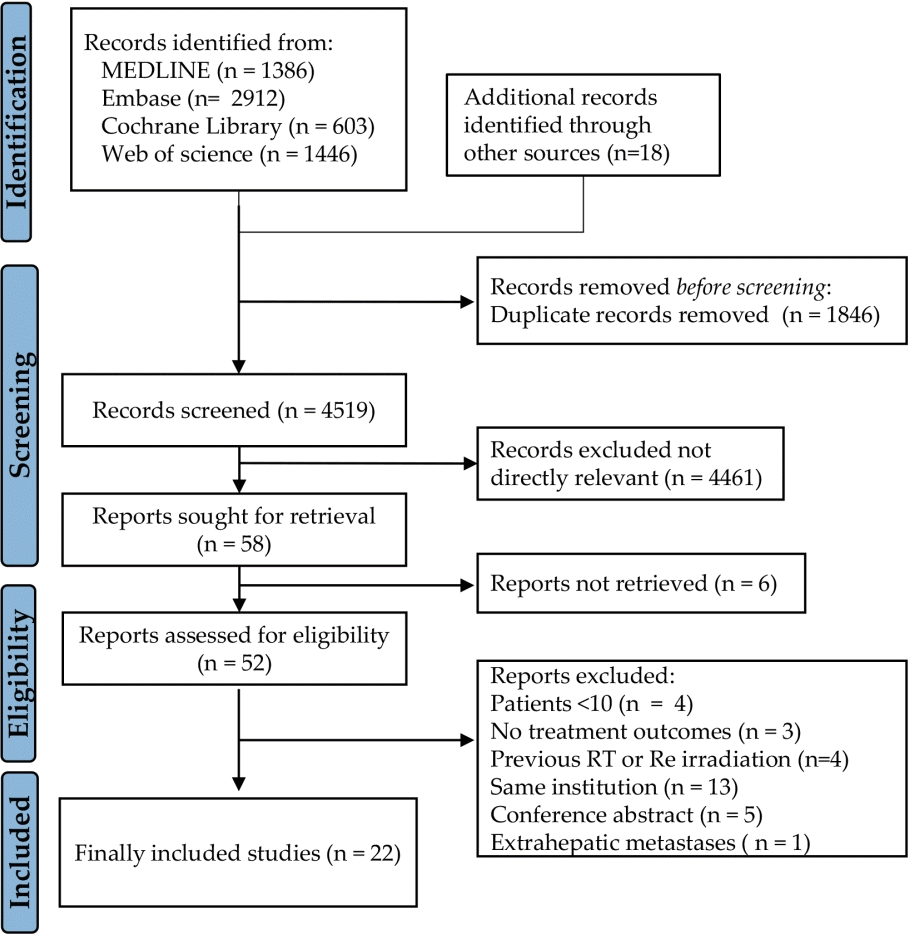1. Dionisi F, Scartoni D, Fracchiolla F, Giacomelli I, Siniscalchi B, Goanta L, et al. Proton therapy in the treatment of hepatocellular carcinoma. Front Oncol. 2022; 12:959552.

2. Mohan R, Grosshans D. Proton therapy - present and future. Adv Drug Deliv Rev. 2017; 109:26–44.

3. Wilson RR. Radiological use of fast protons. Radiology. 1946; 47:487–491.

4. Lawrence JH, Tobias CA, Born JL, McCombs RK, Roberts JE, Anger HO, et al. Pituitary irradiation with high-energy proton beams: a preliminary report. Cancer Res. 1958; 18:121–134.
5. Tsujii H, Tsuji H, Inada T, Maruhashi A, Hayakawa Y, Takada Y, et al. Clinical results of fractionated proton therapy. Int J Radiat Oncol Biol Phys. 1993; 25:49–60.

7. Sung H, Ferlay J, Siegel RL, Laversanne M, Soerjomataram I, Jemal A, et al. Global cancer statistics 2020: GLOBOCAN estimates of incidence and mortality worldwide for 36 cancers in 185 countries. CA Cancer J Clin. 2021; 71:209–249.

8. Cao G, Liu J, Liu M. Global, regional, and national trends in incidence and mortality of primary liver cancer and its underlying etiologies from 1990 to 2019: results from the global burden of disease study 2019. J Epidemiol Glob Health. 2023; 13:344–360.

9. Vitale A, Cabibbo G, Iavarone M, Viganò L, Pinato DJ, Ponziani FR, et al. Personalised management of patients with hepatocellular carcinoma: a multiparametric therapeutic hierarchy concept. Lancet Oncol. 2023; 24:e312–e322.
10. Reig M, Forner A, Rimola J, Ferrer-Fàbrega J, Burrel M, Garcia-Criado Á, et al. BCLC strategy for prognosis prediction and treatment recommendation: the 2022 update. J Hepatol. 2022; 76:681–693.
11. Singal AG, Llovet JM, Yarchoan M, Mehta N, Heimbach JK, Dawson LA, et al. AASLD practice guidance on prevention, diagnosis, and treatment of hepatocellular carcinoma. Hepatology. 2023; 78:1922–1965.

12. European Association for the Study of the Liver. EASL clinical practice guidelines: management of hepatocellular carcinoma. J Hepatol. 2018; 69:182–236.
13. Vogel A, Martinelli E; ESMO Guidelines Committee. Updated treatment recommendations for hepatocellular carcinoma (HCC) from the ESMO clinical practice guidelines. Ann Oncol. 2021; 32:801–805.

14. Korean Liver Cancer Association (KLCA); National Cancer Center (NCC) Korea. 2022 KLCA-NCC Korea practice guidelines for the management of hepatocellular carcinoma. J Liver Cancer. 2023; 23:1–120.
15. Hasegawa K, Takemura N, Yamashita T, Watadani T, Kaibori M, Kubo S, et al. Clinical practice guidelines for hepatocellular carcinoma: The Japan Society of Hepatology 2021 version (5th JSH-HCC guidelines). Hepatol Res. 2023; 53:383–390.

17. Apisarnthanarax S, Barry A, Cao M, Czito B, DeMatteo R, Drinane M, et al. External beam radiation therapy for primary liver cancers: an ASTRO clinical practice guideline. Pract Radiat Oncol. 2022; 12:28–51.

18. Kim TH, Koh YH, Kim BH, Kim MJ, Lee JH, Park B, et al. Proton beam radiotherapy vs. radiofrequency ablation for recurrent hepatocellular carcinoma: a randomized phase III trial. J Hepatol. 2021; 74:603–612.
19. Page MJ, McKenzie JE, Bossuyt PM, Boutron I, Hoffmann TC, Mulrow CD, et al. The PRISMA 2020 statement: an updated guideline for reporting systematic reviews. BMJ. 2021; 372:n71.
20. Wells GA, Shea B, O’Connell D, Peterson J, Welch V, Losos M, et al. The Newcastle-Ottawa scale (NOS) for assessing the quality of nonrandomised studies in meta-analyses [Internet]. Ottawa (CA): Ottawa Hospital Research Institute; [cited 2021 Nov 22]. Available from:
https://www.ohri.ca/programs/clinical_epidemiology/oxford.asp.

21. Raudenbush SW. Analyzing effect sizes: random-effects models. In : Cooper H, Hedges LV, Valentine JC, editors. The handbook of research synthesis and meta-analysis. 2nd ed. New York: Russell Sage Foundation;2009. p. 295–316.
22. Higgins JP, Thompson SG, Deeks JJ, Altman DG. Measuring inconsistency in meta-analyses. BMJ. 2003; 327:557–560.

23. Uchinami Y, Katoh N, Abo D, Morita R, Taguchi H, Fujita Y, et al. Study of hepatic toxicity in small liver tumors after photon or proton therapy based on factors predicting the benefits of proton. Br J Radiol. 2023; 96:20220720.
24. Iizumi T, Okumura T, Hasegawa N, Ishige K, Fukuda K, Seo E, et al. Proton beam therapy for hepatocellular carcinoma with bile duct invasion. BMC Gastroenterol. 2023; 23:267.
25. Bush DA, Volk M, Smith JC, Reeves ME, Sanghvi S, Slater JD, et al. Proton beam radiotherapy versus transarterial chemoembolization for hepatocellular carcinoma: results of a randomized clinical trial. Cancer. 2023; 129:3554–3563.
26. Lin SY, Chen CM, Huang BS, Lai YC, Pan KT, Lin SM, et al. A preliminary study of hepatocellular carcinoma post proton beam therapy using MRI as an early prediction of treatment effectiveness. PLoS One. 2021; 16:e0249003.
27. Iwata H, Ogino H, Hattori Y, Nakajima K, Nomura K, Hayashi K, et al. Image-guided proton therapy for elderly patients with hepatocellular carcinoma: high local control and quality of life preservation. Cancers (Basel). 2021; 13:219.
28. Iwata H, Ogino H, Hattori Y, Nakajima K, Nomura K, Hashimoto S, et al. A phase 2 study of image-guided proton therapy for operable or ablation-treatable primary hepatocellular carcinoma. Int J Radiat Oncol Biol Phys. 2021; 111:117–126.
29. Yoo GS, Yu JI, Park HC, Hyun D, Jeong WK, Lim HY, et al. Do biliary complications after proton beam therapy for perihilar hepatocellular carcinoma matter? Cancers (Basel). 2020; 12:2395.
30. Tamura S, Okamura Y, Sugiura T, Ito T, Yamamoto Y, Ashida R, et al. A comparison of the outcomes between surgical resection and proton beam therapy for single primary hepatocellular carcinoma. Surg Today. 2020; 50:369–378.

31. Hojo H, Raturi V, Nakamura N, Arahira S, Akita T, Mitsunaga S, et al. Impact of proton beam irradiation of an anatomic subsegment of the liver for hepatocellular carcinoma. Pract Radiat Oncol. 2020; 10:e264–e271.

32. Sanford NN, Pursley J, Noe B, Yeap BY, Goyal L, Clark JW, et al. Protons versus photons for unresectable hepatocellular carcinoma: liver decompensation and overall survival. Int J Radiat Oncol Biol Phys. 2019; 105:64–72.

33. Kim TH, Park JW, Kim BH, Kim H, Moon SH, Kim SS, et al. Does riskadapted proton beam therapy have a role as a complementary or alternative therapeutic option for hepatocellular carcinoma? Cancers (Basel). 2019; 11:230.
34. Chadha AS, Gunther JR, Hsieh CE, Aliru M, Mahadevan LS, Venkatesulu BP, et al. Proton beam therapy outcomes for localized unresectable hepatocellular carcinoma. Radiother Oncol. 2019; 133:54–61.

35. Mizuhata M, Takamatsu S, Shibata S, Bou S, Sato Y, Kawamura M, et al. Respiratory-gated proton beam therapy for hepatocellular carcinoma adjacent to the gastrointestinal tract without fiducial markers. Cancers (Basel). 2018; 10:58.

36. Kimura K, Nakamura T, Ono T, Azami Y, Suzuki M, Wada H, et al. Clinical results of proton beam therapy for hepatocellular carcinoma over 5 cm. Hepatol Res. 2017; 47:1368–1374.

37. Kim TH, Park JW, Kim YJ, Kim BH, Woo SM, Moon SH, et al. Phase I dose-escalation study of proton beam therapy for inoperable hepatocellular carcinoma. Cancer Res Treat. 2015; 47:34–45.

38. Lee SU, Park JW, Kim TH, Kim YJ, Woo SM, Koh YH, et al. Effectiveness and safety of proton beam therapy for advanced hepatocellular carcinoma with portal vein tumor thrombosis. Strahlenther Onkol. 2014; 190:806–814.
39. Mizumoto M, Okumura T, Hashimoto T, Fukuda K, Oshiro Y, Fukumitsu N, et al. Proton beam therapy for hepatocellular carcinoma: a comparison of three treatment protocols. Int J Radiat Oncol Biol Phys. 2011; 81:1039–1045.

40. Komatsu S, Fukumoto T, Demizu Y, Miyawaki D, Terashima K, Sasaki R, et al. Clinical results and risk factors of proton and carbon ion therapy for hepatocellular carcinoma. Cancer. 2011; 117:4890–4904.

41. Kawashima M, Kohno R, Nakachi K, Nishio T, Mitsunaga S, Ikeda M, et al. Dose-volume histogram analysis of the safety of proton beam therapy for unresectable hepatocellular carcinoma. Int J Radiat Oncol Biol Phys. 2011; 79:1479–1486.

42. Chiba T, Tokuuye K, Matsuzaki Y, Sugahara S, Chuganji Y, Kagei K, et al. Proton beam therapy for hepatocellular carcinoma: a retrospective review of 162 patients. Clin Cancer Res. 2005; 11:3799–3805.

43. Bush DA, Hillebrand DJ, Slater JM, Slater JD. High-dose proton beam radiotherapy of hepatocellular carcinoma: preliminary results of a phase II trial. Gastroenterology. 2004; 127 Suppl 1:S189–S193.
44. Qi WX, Fu S, Zhang Q, Guo XM. Charged particle therapy versus photon therapy for patients with hepatocellular carcinoma: a systematic review and meta-analysis. Radiother Oncol. 2015; 114:289–295.

45. Sekino Y, Tateishi R, Fukumitsu N, Okumura T, Maruo K, Iizumi T, et al. Proton beam therapy versus radiofrequency ablation for patients with treatment-naïve single hepatocellular carcinoma: a propensity score analysis. Liver Cancer. 2022; 12:297–308.

46. Seo SH, Yu JI, Park HC, Yoo GS, Choi MS, Rhim H, et al. Proton beam radiotherapy as a curative alternative to radiofrequency ablation for newly diagnosed hepatocellular carcinoma. Anticancer Res. 2024; 44:2219–2230.

47. Romero AM, van der Holt B, Willemssen FEJA, de Man RA, Heijmen BJM, Habraken S, et al. Transarterial chemoembolization with drugeluting beads versus stereotactic body radiation therapy for hepatocellular carcinoma: outcomes from a multicenter, randomized, phase 2 trial (the TRENDY trial). Int J Radiat Oncol Biol Phys. 2023; 117:45–52.

48. Comito T, Loi M, Franzese C, Clerici E, Franceschini D, Badalamenti M, et al. Stereotactic radiotherapy after incomplete transarterial (chemo-) embolization (TAE/TACE) versus exclusive TAE or TACE for treatment of inoperable HCC: a phase III trial (NCT02323360). Curr Oncol. 2022; 29:8802–8813.
49. Sapir E, Tao Y, Schipper MJ, Bazzi L, Novelli PM, Devlin P, et al. Stereotactic body radiation therapy as an alternative to transarterial chemoembolization for hepatocellular carcinoma. Int J Radiat Oncol Biol Phys. 2018; 100:122–130.

50. Su TS, Liang P, Zhou Y, Huang Y, Cheng T, Qu S, et al. Stereotactic body radiation therapy vs. transarterial chemoembolization in inoperable Barcelona Clinic Liver Cancer stage A hepatocellular carcinoma: a retrospective, propensity-matched analysis. Front Oncol. 2020; 10:347.

51. Llovet JM, Ricci S, Mazzaferro V, Hilgard P, Gane E, Blanc JF, et al. Sorafenib in advanced hepatocellular carcinoma. N Engl J Med. 2008; 359:378–390.

52. Cheng AL, Kang YK, Chen Z, Tsao CJ, Qin S, Kim JS, et al. Efficacy and safety of sorafenib in patients in the Asia-Pacific region with advanced hepatocellular carcinoma: a phase III randomised, double-blind, placebo-controlled trial. Lancet Oncol. 2009; 10:25–34.

53. Kudo M, Finn RS, Qin S, Han KH, Ikeda K, Piscaglia F, et al. Lenvatinib versus sorafenib in first-line treatment of patients with unresectable hepatocellular carcinoma: a randomised phase 3 non-inferiority trial. Lancet. 2018; 391:1163–1173.
54. Finn RS, Qin S, Ikeda M, Galle PR, Ducreux M, Kim TY, et al. Atezolizumab plus bevacizumab in unresectable hepatocellular carcinoma. N Engl J Med. 2020; 382:1894–1905.

55. Cheng AL, Qin S, Ikeda M, Galle PR, Ducreux M, Kim TY, et al. Updated efficacy and safety data from IMbrave150: atezolizumab plus bevacizumab vs. sorafenib for unresectable hepatocellular carcinoma. J Hepatol. 2022; 76:862–873.

56. Abou-Alfa GK, Lau G, Kudo M, Chan SL, Kelley RK, Furuse J, et al. Tremelimumab plus durvalumab in unresectable hepatocellular carcinoma. NEJM Evid. 2022; 1:EVIDoa2100070.

57. Sangro B, Chan SL, Kelley RK, Lau G, Kudo M, Sukeepaisarnjaroen W, et al. Four-year overall survival update from the phase III HIMALAYA study of tremelimumab plus durvalumab in unresectable hepatocellular carcinoma. Ann Oncol. 2024; 35:448–457.
58. Yoon SM, Ryoo BY, Lee SJ, Kim JH, Shin JH, An JH, et al. Efficacy and safety of transarterial chemoembolization plus external beam radiotherapy vs sorafenib in hepatocellular carcinoma with macroscopic vascular invasion: a randomized clinical trial. JAMA Oncol. 2018; 4:661–669.
59. Kim J, Cheng JC, Nam TK, Kim JH, Jang BK, Huang WY, et al. Efficacy of liver-directed combined radiotherapy in locally advanced hepatocellular carcinoma with portal vein tumor thrombosis. Cancers (Basel). 2023; 15:3164.

60. Breder VV, Vogel A, Merle P, Finn RS, Galle PR, Zhu AX, et al. IMbrave150: exploratory efficacy and safety results of hepatocellular carcinoma (HCC) patients (pts) with main trunk and/or contralateral portal vein invasion (Vp4) treated with atezolizumab (atezo) + bevacizumab (bev) versus sorafenib (sor) in a global Ph III study. J Clin Oncol. 2021; 39 Suppl 15:4073.

61. Sugahara S, Nakayama H, Fukuda K, Mizumoto M, Tokita M, Abei M, et al. Proton-beam therapy for hepatocellular carcinoma associated with portal vein tumor thrombosis. Strahlenther Onkol. 2009; 185:782–788.

62. Komatsu S, Terashima K, Ishihara N, Matsuo Y, Kido M, Yanagimoto H, et al. Novel concept of “sequential particle radiotherapy” with atezolizumab plus bevacizumab for hepatocellular carcinoma with portal vein tumor thrombus. Surg Today. 2024; 54:972–976.

63. Yanagihara TK, Tepper JE, Moon AM, Barry A, Molla M, Seong J, et al. Defining minimum treatment parameters of ablative radiation therapy in patients with hepatocellular carcinoma: an expert consensus. Pract Radiat Oncol. 2024; 14:134–145.
65. Mizumoto M, Ogino H, Okumura T, Terashima K, Murakami M, Ogino T, et al. Proton beam therapy for hepatocellular carcinoma: multicenter prospective registry study in Japan. Int J Radiat Oncol Biol Phys. 2024; 118:725–733.

66. Hasan S, Abel S, Verma V, Webster P, Arscott WT, Wegner RE, et al. Proton beam therapy versus stereotactic body radiotherapy for hepatocellular carcinoma: practice patterns, outcomes, and the effect of biologically effective dose escalation. J Gastrointest Oncol. 2019; 10:999–1009.

67. Hsieh RC, Lee CH, Huang HC, Wu SW, Chou CY, Hung SP, et al. Clinical and dosimetric results of proton or photon radiation therapy for large (>5 cm) hepatocellular carcinoma: a retrospective analysis. Int J Radiat Oncol Biol Phys. 2024; 118:712–724.

68. Spychalski P, Kobiela J, Antoszewska M, Błażyńska-Spychalska A, Jereczek-Fossa BA, Høyer M. Patient specific outcomes of charged particle therapy for hepatocellular carcinoma - a systematic review and quantitative analysis. Radiother Oncol. 2019; 132:127–134.

69. Zaki P, Chuong MD, Schaub SK, Lo SS, Ibrahim M, Apisarnthanarax S. Proton beam therapy and photon-based magnetic resonance imageguided radiation therapy: the next frontiers of radiation therapy for hepatocellular carcinoma. Technol Cancer Res Treat. 2023; 22:15330338231206335.
70. Hsieh CE, Venkatesulu BP, Lee CH, Hung SP, Wong PF, Aithala SP, et al. Predictors of radiation-induced liver disease in eastern and western patients with hepatocellular carcinoma undergoing proton beam therapy. Int J Radiat Oncol Biol Phys. 2019; 105:73–86.







 PDF
PDF Citation
Citation Print
Print





 XML Download
XML Download